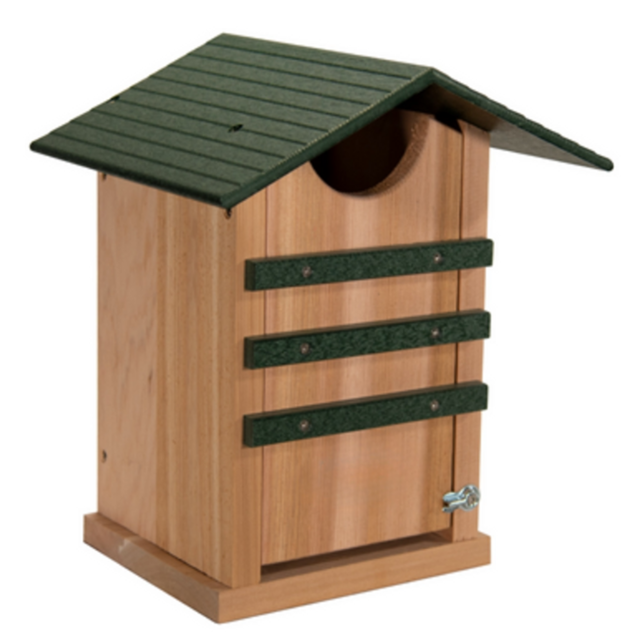- 2024 Native Trees
- >
- Rain Barrels and Wildlife House
- >
- Screech Owl Nesting Box
Screech Owl Nesting Box
SKU:
$66.25
$66.25
Unavailable
per item
This beautiful, hand-made Screech Owl box is made in the USA! The body is made of cedar wood and the roof is made of recycled poly lumber. The front door of this owl house swings up for easy cleaning and also has drainage holes in the bottom for proper drainage.



